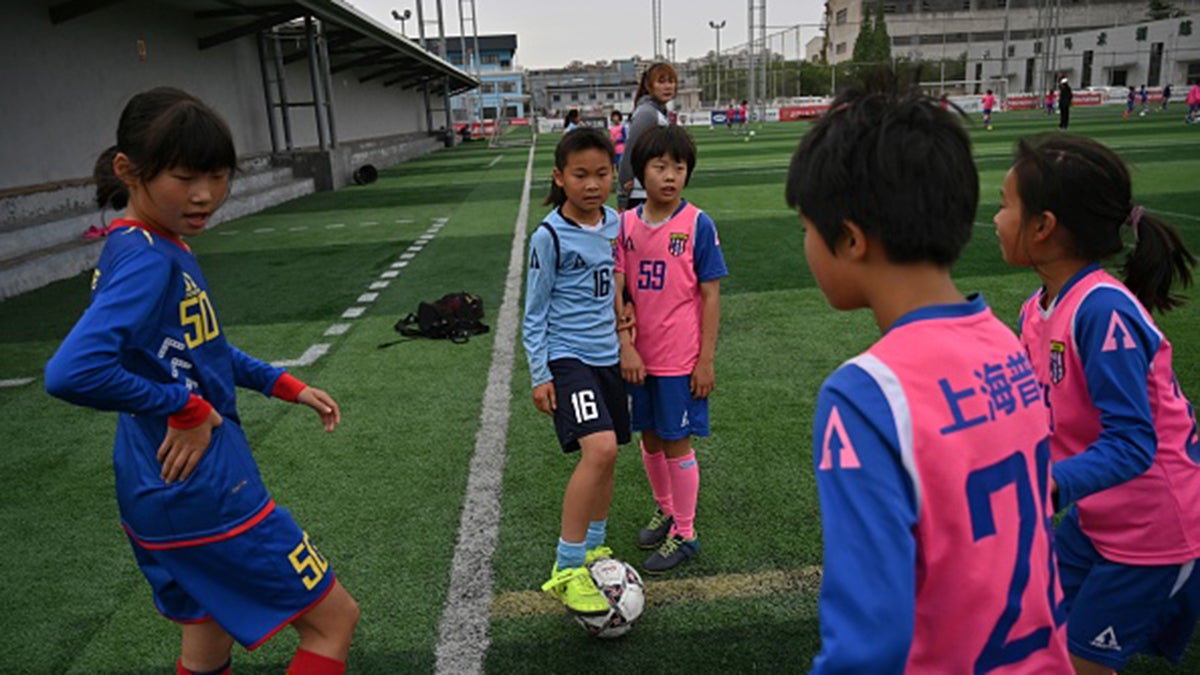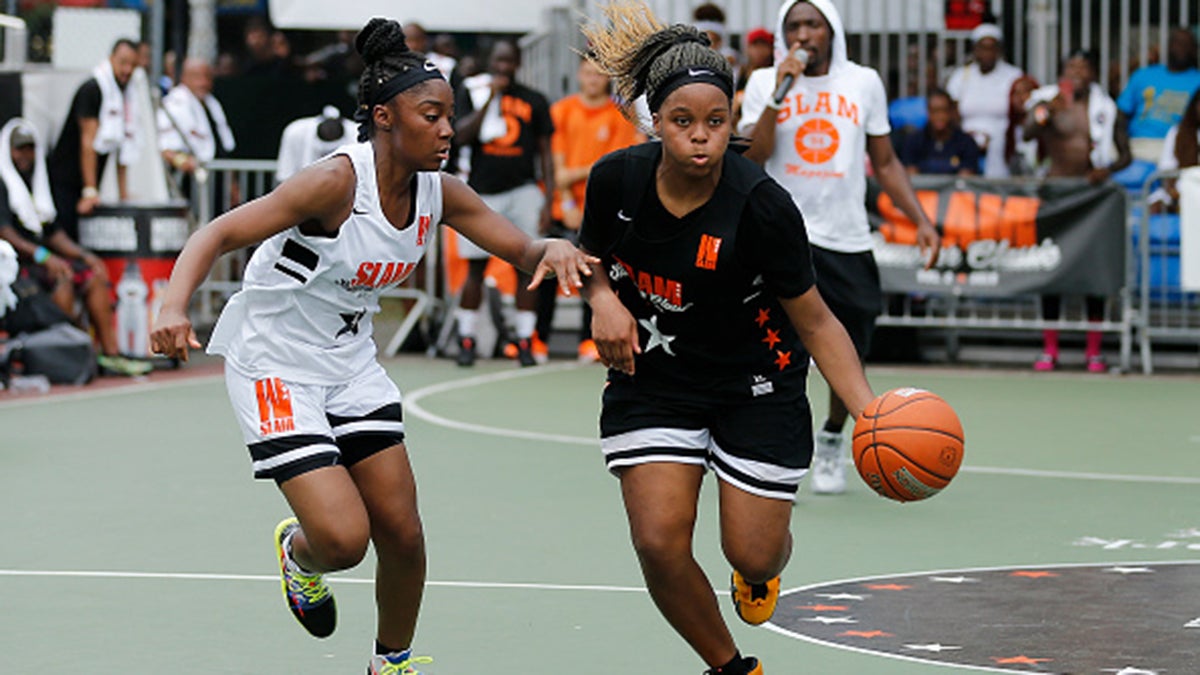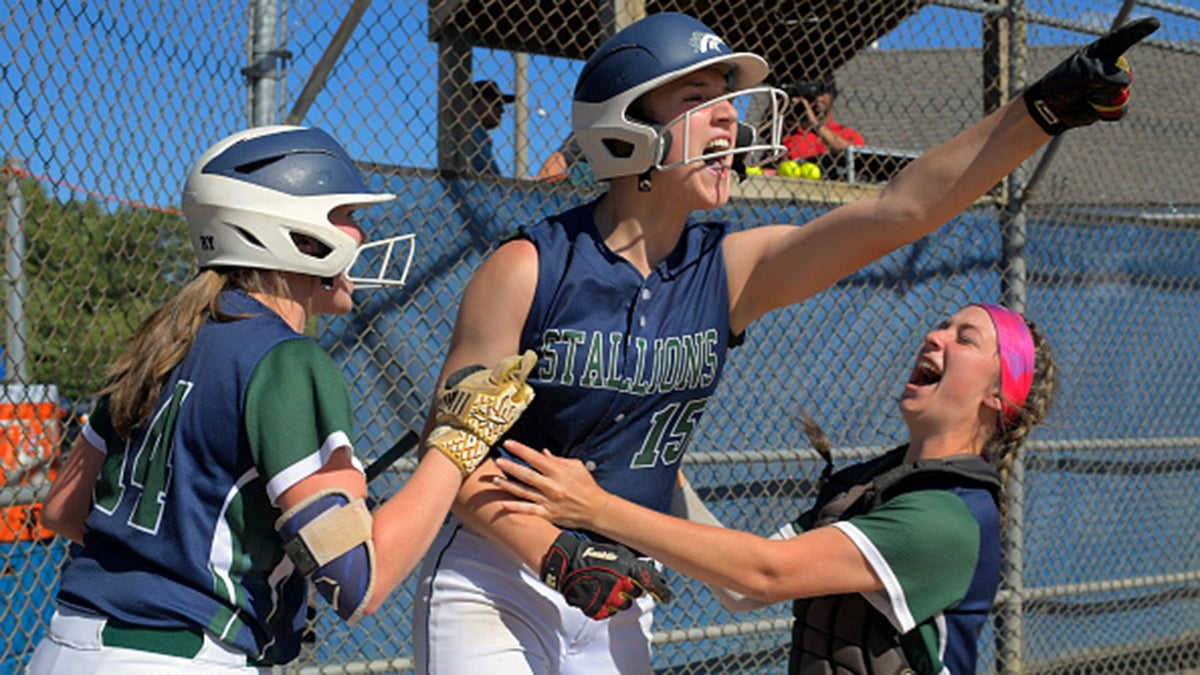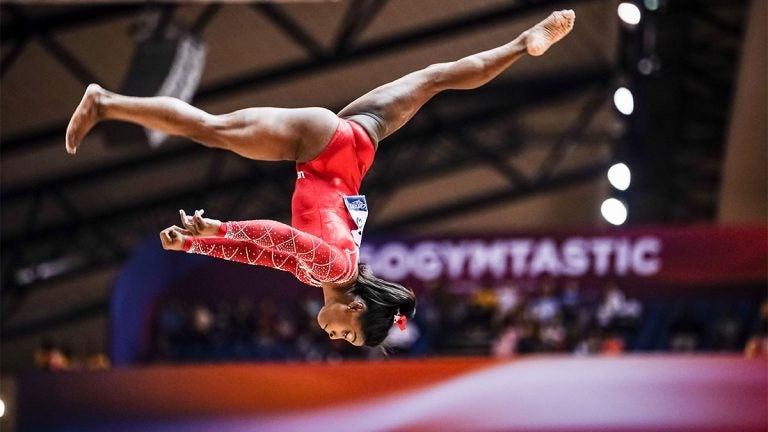Girls Play Sports Less Than Boys, Miss Out On Crucial Benefits
Why this matters
Girls play sports less than boys do, so they miss out on the immense benefits kids get from playing sports — even though girls may need them most.
Young people reap numerous benefits from participating in sports, including improved health and self-esteem, and when girls don’t play, they miss out. Research shows that girls are less likely to participate in sports than boys, and, if they do play, they are more likely to drop out.
But girls may need these benefits most. Girls often lack confidence — especially in their teen years. Two-thirds of Australian teenage girls said playing sports makes them feel more confident. However, half quit sports by the age of 17, according to Suncorp’s 2019 Australian Youth and Confidence Research.
So why are girls turning away from sports?
Research suggests the reasons include a lack of fun, cost barriers and cultural messages that tell girls in subtle and not-so-subtle ways that sports are for boys.
In the U.S., about 4.5 million boys and 3.4 million girls participated in high school sports in 2018-19, according to the National Federation of State High School Associations’ High School Athletics Participation Survey. Overall sports participation declined for the first time in 30 years.
For kids ages 6-12, the Aspen Institute’s State of Play report found 39% of boys played a sport on a regular basis in 2018, while 31% of girls did. The report is part of the institute’s Project Play initiative.
During the 2015-16 school year, 52% of boys participated in high school sports, and 44% of girls did, even though schools offered similar opportunities, the Women’s Sports Foundation (WSF) reported in its July 2019 report The State of High School Sports in America.
Studies in other countries have found similar results. In Australia, 69% of boys between the ages of 11 and 17 play sports, while 55% of girls do, according to the 2019 Australian Youth and Confidence Research. It found that while only 30% of boys ages 15-17 decreased their participation in the past year, 46% of girls did.
In Canada, girls’ and women’s participation in sport has continued to decline for 20 years, and if a girl has not played sports by the time she turns 10, there is only a 10% chance that she will be physically active as an adult, according to the 2016 report Women in Sport: Fuelling a Lifetime of Participation.
Sport England’s 2018 Active Lives Children and Young People Survey looked at children ages 5-16 and found boys are more likely than girls to be active every day: 20% for boys compared to 14 % for girls.
Also, WSF and Project Play each concluded girls of color play sports less than white girls.
“Unfortunately, too many teens, primarily teen girls of color, still don’t have equal access to sports,” WSF’s 2018 Teen Sport in America: Why Participation Matters report concluded. “And with an increase in teens between eighth and 12th grades dropping out of sports, this means that teen girls – a group that is already 15 percent less likely to participate in sports than their male counterparts — are disproportionately missing out on experiencing the full academic, educational and health benefits of sports.”
So why do girls play sports less?
Cultural messages
Girls may think sports are for boys. Yes, this is still a problem, said Marjorie Snyder, WSF’s senior director of research and programs.
“It’s not just an individual action or behavior that affects the girl,” Snyder said. “She gets an entire set of messages, and then she puts the story together herself. She may not see women playing sports on TV, or coaching, very often.
Maybe a girl “walks into the gym and she sees all the posters on the wall – and they’re all of boys and men playing sports, and none of girls and women playing sports. So she’s getting this set of messages that devalue her experience in sport.”
Countering those messages takes work, Snyder said. Coaches may convey these messages unintentionally, so WSF is “trying to make sure that coaches understand that although boys and girls are not different species, girls do come to sport with a different set of cultural experiences than boys do,” she said.
Vera Lopez, an Arizona State University professor of justice and social inquiry, and a Global Sport Institute seed-grant recipient, published a study in 2018 on the experiences in sports of 78 Latina girls ages 12 to 15. The girls surveyed often felt self-conscious and insecure, and they were afraid to make mistakes, because they would get teased.
“In (physical education) settings, they feel self-conscious about their bodies, but also self-conscious about their ability to know the sports,” especially if they didn’t play them when they were younger, Lopez said. “That contributes to them not feeling confident in those spaces.”
Lopez added Latina girls are “more likely to attend segregated, low-income schools, so they’re already in this context where there’s limited funding and limited opportunities. But even within that context, they are receiving messages that sports is not a place that they belong.”

Lopez said these messages come from institutional, instructional and interpersonal relationships, including their schools, coaches, teachers and peers. For example, she said “a lot of them may feel like they are taught differently — the coaches may handle them with kid gloves. That was something that came up a lot — that girls aren’t as physically tough as boys, and they’re too emotional or too sensitive.”
The Women’s Sports Foundation’s April 2019 report Coaching Through a Gender Lens: Maximizing Girls’ Play and Potential stated: “Both boys and girls perceive boys as having superior sports skills and associate being an athlete with being a boy. Communities, schools, and parents devote more resources and invest more in supporting boys’ participation.”
Family expectations may be another barrier for girls. Snyder said some girls reach a certain age and then must shoulder greater family responsibilities.
“They’re the ones who have to stay home and take care of their younger siblings or to cook, so they’re being asked to leave sport for family responsibilities,” she said.
Safety and security issues figure in as well.
“The tip of the iceberg is the safety issues we’ve seen around sexual abuse, sexual harassment and sexual violence, particularly with the gymnasts,” said Snyder, who added that safety issues also include having safe transportation to and from practice and games.
“Parents may not feel comfortable letting their daughters travel independently to their sports experiences,” she said.
Not fun anymore
Project Play’s National Youth Sport Survey found the average child quits sports by the time he or she turns 11, most often because it isn’t fun anymore.
Why isn’t it fun? Part of the reason may be that kids and adults have different priorities.

“What we have found is that the No. 1 reason they want to play is to be with their friends and have fun. Winning ranks much lower. For adults, winning ranks very high,” said Jon Solomon, editorial director at Project Play. “What happens then is you end up treating kids as mini-adults and pushing them to do things they’re just not capable physically, emotionally or mentally yet to do.
“No one really asks the kids for their own input and what they want their experience to be. It sounds simple, but a lot of adults don’t really do that.”
Project Play has launched a campaign called “Don’t Retire, Kid” to keep kids from dropping out of sports, and it contains guidance on how to ask kids what they want.
Accessibility
Between the 1999-2000 and 2015-16 school years, the number of public high schools reporting they did not offer interscholastic sports increased from 11% to 24%, according to the State of High School Sports report. Snyder noted that charter schools often don’t offer any sports.
Whether in public or private schools or in club sports programs, the pay-to-play model sometimes excludes kids. The State of Play report found U.S. families spend an average of $693 per child per year to play one sport. The most expensive sport was ice hockey ($2,583), and the least expensive was track and field ($191). Kids from lower-income households are less likely to participate. Only 22% of kids from households with an income below $25,000 per year played sports on a regular basis, while 43% of kids from families with incomes of $100,000 or more did.
Regardless of income level, all these studies show kids benefit in many ways when they participate in sports.
“The evidence we’ve seen supports the idea that for kids who play sports in high school, it’s incredibly valuable — it’s integral to their high school experience,” Snyder said. “They come to school more often, they get better grades, they participate in other extracurricular activities — there’s just a lot of positive that comes from participating in high school sports.”
Variety
Project Play supports “sport sampling,” rather than specializing in a single sport.
“There’s research out there that shows that specializing at too young an age in one sport can increase the risk of overuse injuries and also burnout,” Solomon said.
The Teen Sport report showed boys are much more likely to play multiple sports than girls, according to Snyder.
“The benefits that accrue to you are greater when you play two or more sports,” she said. “So girls are being shortchanged, not just in participation opportunities, but also in terms of the benefits that they can get from that sports opportunity.”
Snyder said girls are participating in a wider variety of sports, including some nontraditional sports for girls, pointing to the growing popularity of girls flag football in Florida as an example. Also, the High School Athletics Participation Survey found girls’ participation in wrestling increased 27% last year, to 21,735 participants nationally.
Girls who opt for nontraditional sports such as skateboarding and rock climbing may account for some of the measured decline in participation because most research doesn’t include these sports, Snyder said.
“But we know from our own research that boys participate in these other activities at higher rates than girls do,” she added.
Snyder said there’s a gender gap in both school sports and private sports, such as club teams.
Potential solutions
Female coaches are considered key to girls’ participation and retention, but only 27% of youth sports head coaches are female, the State of Play report says.
“We know how important it is for girls to see women as coaches, role models and mentors, because they have experiences similar to theirs, having gone through sports like they have,” Solomon said.
Girls can more easily identify with female coaches, who can fight negative cultural messages and show girls that they belong in sports, the Women's Sports Foundation’s Gender Lens report concluded. But recruiting female coaches is difficult.
“People have to intentionally recruit females to be coaches,” Solomon said. “In some walks of life in our society, there’s still this idea that the dad is the coach and the mom is the team mom, who organizes the drinks and the snacks. No, moms can absolutely coach.”
College and even high school athletes can coach as well, Solomon said, “but you have to go out there and ask them. Sometimes people won’t volunteer unless they’re asked.”

The girls surveyed in the Gender Lens report “cited supportive coaching practices that reward effort or trying a new skill over winning, encourage learning from mistakes while staying positive, and promote integrity and honesty.”
More broadly, the Teen Sport report advises: “Identify ways to adjust the culture, composition, and operations of sports to make them more accepting of girls,” including bringing in more diverse coaches and “removing rituals and behaviors that consciously or unconsciously exclude girls, such as hazing.”
Through programs such as Sports 4 Life, which is aimed at African-American and Hispanic girls, WSF is “trying to build environments for girls that will help them not only in sport but also in life,” Snyder said. She added that several other organizations are doing similar work, and these programs are growing.
“Historically, when we look at girls of color in sports, we tend to blame families and cultures,” Lopez said. But her current research looks at the role of schools “in reinforcing gender stereotypes about who should play sports – and who should play what type of sports.”
Solomon said Project Play wants to educate the public, particularly parents, about the benefits of sports and about ways to encourage kids to participate.
“Parents are the ones who ultimately are putting kids in sports, making decisions, and sometimes putting pressure on kids as well,” Solomon said. “So the idea is to help empower and educate parents, so they have resources.”
One such resource is the Healthy Sport Index, an online tool that helps assess the relative benefits and risks of the 10 most popular high school sports. It looks at the level of physical activity, safety and psychosocial benefits (emotional, social and mental well-being) each sport offers.
A moment of change?
Because the 2019 Women’s World Cup focused substantial attention on women playing sports, it may help change the narrative.
The State of Play report noted young boys are starting to wear USA women’s soccer jerseys — and those jerseys are now made in sizes for men and boys – signaling a shift in attitudes.
But was the World Cup enough to make girls feel like they belong in sports?
“This is a time of opportunity for a lot of folks who are invested in women’s sports,” Snyder said. “It’s an opportunity for the media to think more carefully about how it presents women’s sports — and the wide variety of stories of girls and women in sport.”
She added the World Cup may only be a moment in time, “but it does have the potential to jump-start good things in women’s sports.”
The stakes are high. If girls eschew sports, they lose the advantages their peers gain from sports.
“There are just tremendous health benefits,” Snyder said, from reducing levels of obesity and chronic diseases to eliminating risk behaviors such as smoking. “Kids who play sports, particularly girls, have higher self-esteem and greater self-confidence, and there are academic benefits. Kids who play sports stay in school, they have higher aspirations for college, and they get better grades in high school. There’s an overwhelming case to be made for why kids should play sports.”
Allison Torres Burtka is a freelance writer and editor based in metro Detroit. You can read more of her work here.





